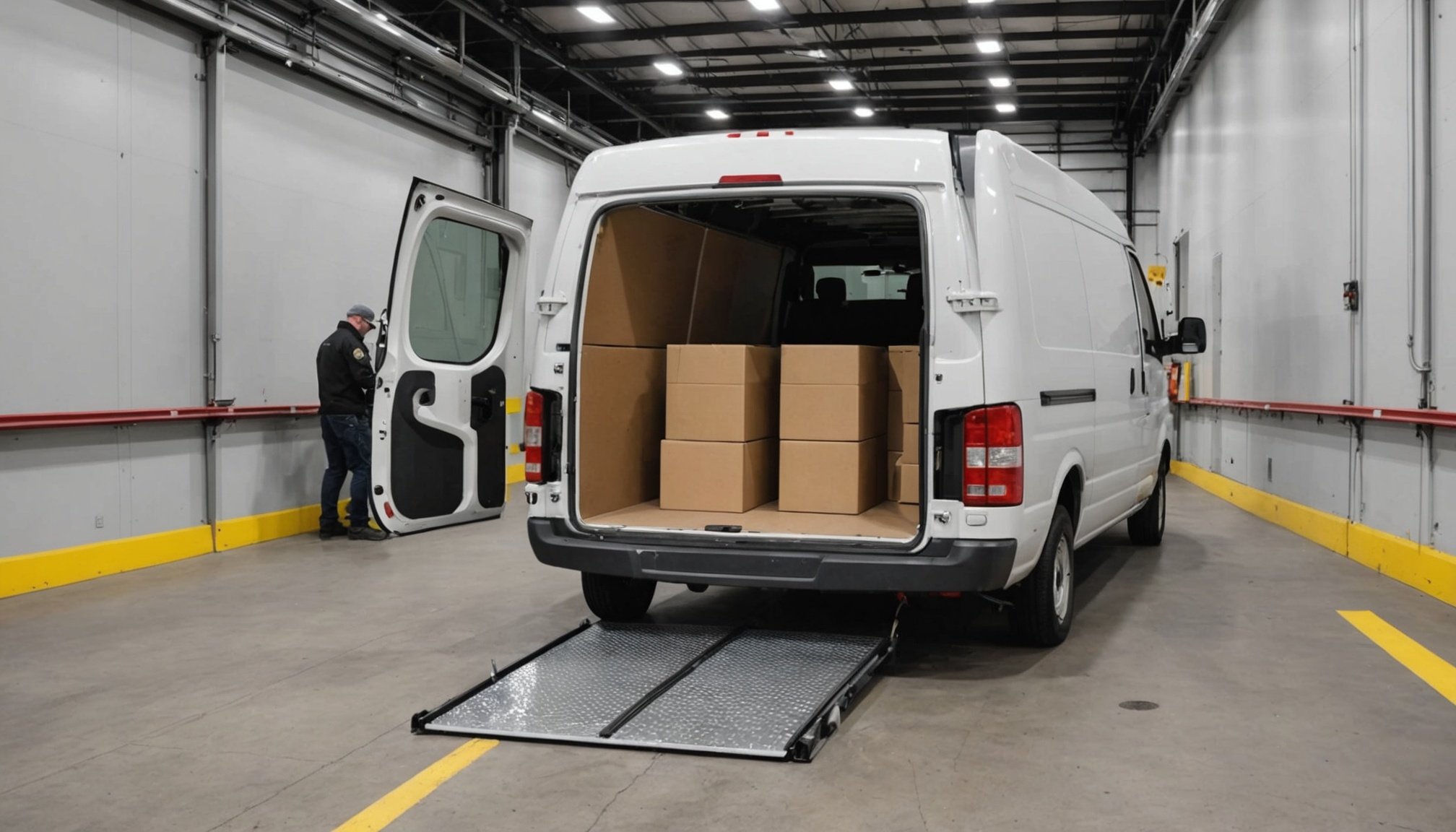Overview of Cargo Barriers in Commercial Vans
Cargo barriers serve a crucial role in ensuring driver and passenger safety within commercial vans. These dividers, typically installed between the cargo area and the seating compartment, prevent shifting loads from posing risks during transportation. Given their importance, understanding varying types and legal requirements is vital.
Primarily, there are three types of cargo barriers used: fixed, adjustable, and mesh. Fixed barriers offer robust separation; adjustable ones allow flexibility for different cargo sizes; and mesh barriers provide lighter, more versatile options.
Also read : Ultimate tips for ensuring cabin comfort and reducing driver fatigue on extended road adventures
Compliance with safety regulations and legal mandates is paramount. Different regions impose distinct requirements on cargo barrier installations. For instance, many jurisdictions dictate specific impact resistance standards that barriers must meet, focused on safeguarding occupants from potential injuries due to unrestrained cargo. Adhering to these standards not only ensures safety but also shields businesses from legal repercussions.
Understanding regional safety regulations can guide proper installation and use of these barriers, making them an essential investment for commercial van operators. By aligning with designated legal frameworks, businesses can enhance operational safety and maintain compliance, securing both their cargo and passengers on the road.
Topic to read : Elevate your stopping power: key insights for perfecting braking with enhanced ceramic brake pads
Safety Precautions for Modifying Cargo Barriers
When modifying cargo barriers, adherence to safety precautions is paramount to ensure both the integrity of the barrier and the safety of those involved in the modification process. The use of appropriate personal protective equipment (PPE) is essential. This includes items such as gloves, safety goggles, and reinforced clothing, which protect against potential injuries during physical alterations.
Potential hazards are commonly associated with cargo barrier alterations. Sharp edges, heavy components, and power tools pose significant risks. Awareness and mitigation of these hazards are crucial. Ensuring that tools are maintained and used correctly can significantly reduce the incidence of accidents.
Equally important is compliance with manufacturer guidelines and established safety standards. Deviating from specified procedures can compromise the barrier’s effectiveness, potentially leading to legal liabilities. Manufacturers often provide detailed instructions to ensure modifications adhere to safety regulations and maintain the product’s integrity.
Adhering strictly to these guidelines ensures safe modifications while maintaining the barrier’s functionality and compliance. Integrating both personal protective equipment and adherence to standards allows for modifications that are executed safely and effectively, reducing risk and enhancing operational safety.
Step-by-Step Instructions for Altering Cargo Barriers
When modifying cargo barriers, precise adherence to a structured procedure ensures both safety and efficiency.
Tools Required for the Modification
Before beginning, gather all necessary tools. Essential items include:
- Power drill
- Measuring tape
- Screwdrivers
- Wrench set
Having these tools ready paves the way for a smooth modification process.
Preparation and Measurement Procedures
Start by wearing the appropriate personal protective equipment (PPE): gloves, goggles, and durable clothing. This safety precaution mitigates the risk of injury during the modification. Accurate measurements are crucial. Use a measuring tape to precisely determine the dimensions of the cargo space and the barrier. This ensures the modification maintains safety standards for effective separation between the cargo area and seating.
Alteration and Installation Process
Once preparation is complete, proceed with altering the cargo barriers. Begin by removing any existing fastenings with your tools. Carefully align the barrier based on your measurements. Secure it using appropriate screws or bolts, ensuring every fastener is tightly fixed. This step ensures the barrier’s stability and compliance with safety regulations. Double-check all modifications for security.
Legal Considerations for Cargo Barrier Modifications
When altering cargo barriers in commercial vans, understanding and adhering to legal considerations is crucial. Compliance with regional and industry-specific regulations protects against potential legal ramifications and ensures safety for all vehicle occupants.
Review of Local Regulations
In various regions, specific laws govern how cargo barrier modifications should be conducted. These regulations may dictate materials, installation methods, and testing standards. Adhering to these rules is mandatory to avoid penalties and liability issues. It’s essential for businesses to stay updated on any changes in local legislation affecting their operations.
Potential Legal Implications of Non-Compliance
Failing to comply with safety regulations can have severe consequences. Non-compliance might result in fines, invalidation of insurance policies, or increased liability during accidents. These outcomes underscore the importance of ensuring every modification meets established legal and safety benchmarks.
Certified Standards for Cargo Modifications
The industry has set certified standards to guide cargo barrier modifications, such as those from international safety bodies. These standards ensure that the barriers will perform adequately during an impact, safeguarding passengers. Familiarity with these certified standards is vital to carry out modifications legally and effectively, aligning with both safety requirements and industry standards.
Best Practices and Tips for Successful Modifications
Achieving a successful cargo barrier modification requires adherence to best practices and expert advice. To ensure safety and efficiency, start with proper preparation. Gather all necessary tools and personal protective equipment (PPE) before initiating modifications. Securing necessary equipment streamlines the process and ensures safety.
Common mistakes include neglecting measurement accuracy. Ensure precision by double-checking all dimensions before drilling or cutting. Correct measurements guarantee the barrier fits securely, maintaining its integrity and effectiveness.
It is prudent to avoid improvising during the modification process. Stick to industry advice and guidelines laid out by manufacturers, as deviations can compromise safety and legality. Familiarising yourself with updated standards is critical. Doing so provides assurance that modifications align with current requirements. Consult professionals when in doubt. Their expertise can prevent costly errors and enhance the modification’s success.
Finally, regular maintenance checks post-modification will identify potential issues early. Routine inspections help in recognising wear and tear, ensuring that the cargo barrier remains robust over time. By following these practices, you can enhance safety, achieve compliance, and optimise functionality.
Visual Aids and Resources
Incorporating visual aids into cargo barrier modifications can significantly improve understanding and skill development. Diagrams offer clear insights into complex steps, ensuring that users can visualise the process and comprehend each phase accurately. For instance, a diagram may illustrate the placement of screws or the alignment of the barrier, aiding precision in modifications.
Diagrams of Modification Processes
Diagrams serve as a superb resource for illustrating the modification processes. They can highlight crucial steps and pinpoint areas where precision is needed, acting as a reliable reference throughout the project.
Video Tutorials for Instruction
Video tutorials are essential for visual learners. These resources provide comprehensive instruction and step-by-step guides, demonstrating techniques and ensuring modifications meet safety standards. Watching experts carry out modifications offers invaluable practical insight.
Links to Further Reading and Tools
To complement the visual aids, explore additional literature and resources. These offerings supply in-depth explanations and further equip you with the knowledge necessary for successful modifications, enhancing both safety and efficiency.
By integrating visual aids and instructional resources, you bolster your ability to execute cargo barrier modifications proficiently and securely.
Summary of Key Points to Remember
When engaging with cargo barriers in commercial vans, it’s essential to adhere to the many facets of safety, compliance, and practicality involved. The robust role that these barriers play in ensuring occupant safety cannot be overstated.
Key considerations encompass adherence to safety precautions throughout any barrier modification process. This involves using appropriate personal protective equipment (PPE) to shield against potential hazards associated with alterations. Equally critical is following manufacturer modification guidelines to maintain the integrity of the barriers.
It’s imperative to stay informed about legal considerations and regional regulations to avoid severe consequences of non-compliance, including fines and potential legal liabilities. Understanding and implementing industry standards ensures that modifications perform effectively, reinforcing overall safety.
Equipping oneself with effective step-by-step instructions aids in the seamless and safe installation of cargo barriers. Additionally, employing visual aids like diagrams and incorporating video tutorials can significantly enhance understanding and skill in the modification process.
Recognising these key points ensures a secure and compliant operation, supporting both the business’s viability and the safeguarding of passengers and cargo on every journey. Staying aligned with industry best practices rounds out an effective approach to successful cargo barrier management.











